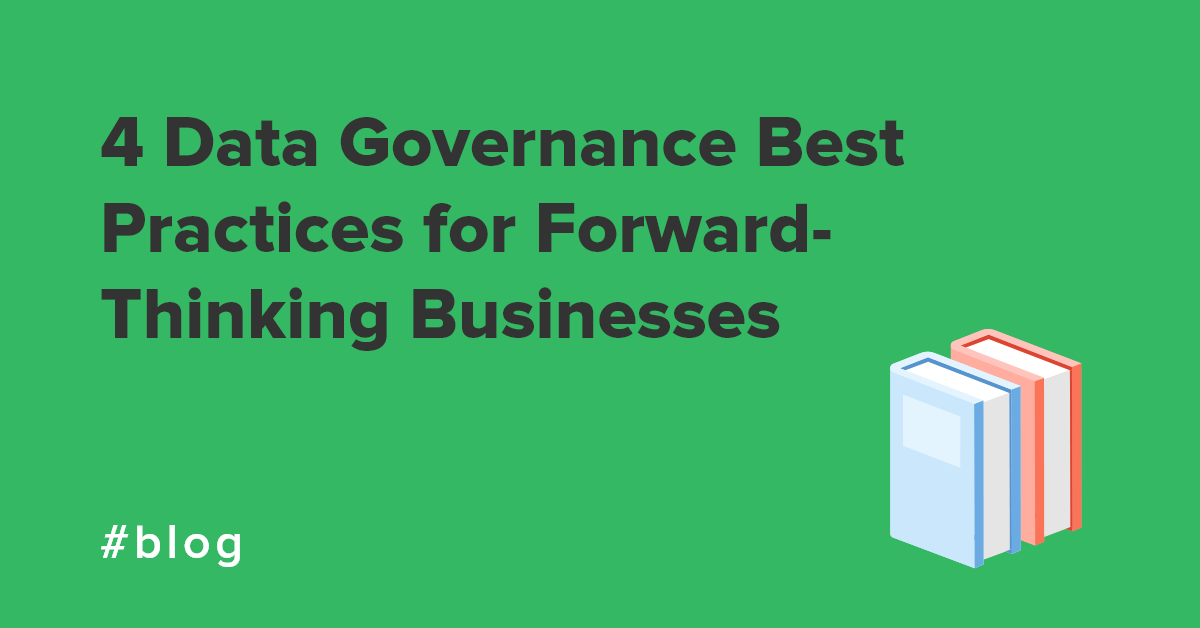A modern business without a data governance strategy is like a rock climber without a safety rope. Not only is strong governance crucial to the security and privacy of your customer data, it’s also the only way to remain in complete control of your IT operations.
But there are both good and bad ways of implementing your strategy and delivering an effective data governance program. For most companies, the same core problems prevent them from fully optimizing their governance process:
- 26 percent of organizations suffer from a lack of human resources
- 21 percent of organizations spend too much time cleansing and validating their data
- 13 percent of organizations lack the required budget
- 8 percent of organizations are held back by inaccurate data
While there is no silver bullet for these issues, with the right data governance framework, you can take bigger strides towards more maintainable and transparent data processes. And, a series of effective data governance policies will empower your business to tackle audits and other wider business challenges related to data.
To get you started, here are four essential data governance best practices every organization needs to follow.
Data governance best practice #1: Start small and build out in stages
It’s tempting to completely overhaul your current data processes. But this is a sure-fire way to create confusion. While a complete paradigm shift might be necessary, the most effective data governance strategies take a managed approach to change. Building out in this way gives you the opportunity to test your new policies and processes before they are rolled out to the entire company.
To avoid failure, it’s best to address things in three key stages:
- People
- Process
- Technology
Working on each of these components individually makes it easier to identify and fix key flaws in your governance strategy before they become major operational roadblocks. Let’s take a minute to break them down.
People
People ultimately drive the success of your data governance program. If your employees are resistant to change, it’s almost impossible to successfully launch or overhaul your governance strategy. So, to make sure you get the buy-in you need, everyone needs to understand and operate within the same standards, policies, and definitions.
Data ownership is a core part of this process. Clear accountability and communication make all the difference when championing permanent, wide-scale change and will prevent the emergence of departmental data silos.
Process
Once you’ve defined the roles and responsibilities of your people and teams, you can work on building out your data governance processes. The core question here is ‘how do I build more transparent and auditable data processes’?
To answer this, you need a way to accurately capture business logic. A common data vocabulary ensures that everyone is working from a single version of the truth (or golden record) and reduces the chances of dataset divergence. Typically, a business analyst will capture this logic in data models and share them with your company’s development team.
Technology
The third and final step in your data governance strategy is its physical implementation. At this stage, you need to know which technology you’ll use to put your data models into action.
Traditionally, organizations have relied on the unique interpretations of individual developers to translate this documentation into executable code. But this comes at a cost. With everyone doing their own thing, it’s hard to maintain any level of control or standardization, leading to the inevitable divergence of semantics, process, and data quality.
To get around this (and to future-proof your compliance strategy), you need a better way of bridging the gap between data definitions and IT operations and the right tool to facilitate this.
Data governance best practice #2: Make metrics matter
Often data governance initiatives derail because their intended outcomes aren’t measurable. So, identify the key metrics you want to track when building your business case.
Here are a few examples:
- Improvement in data quality scores
- Reduction in risk events
- Reduction in data reconciliation costs
- Increased adherence to data management standards and processes
You probably already have a strong idea of where your business needs to improve, so use that as the focal point for your new strategy.
Data governance best practice #3: Keep an open line of communication with stakeholders
Data governance conversations with executives shouldn’t stop at the point of buy-in. To keep the ball rolling, you need to gain the continued support and engagement of your sponsor. Your sponsor (e.g. your CEO) is integral to the vision and direction of your governance initiatives, but is unlikely to oversee day-to-day operations.
For this, you need to appoint a data champion to become the driving voice of your governance program. It’s up to them to pick up the gauntlet and ensure each stakeholder is moving towards the same shared goals.
Data governance best practice #4: Ensure your data processes are up to scratch
While it’s laudable to set up a new council and target an instant impact, you need to know exactly how you’re going to execute your plans, not just who will carry them out.
Since no two companies are the same, neither are their data governance strategies. Institutional knowledge is often fragmented and buried in a wide array of scripts, procedures, and interfaces. In other words, everyone is doing something different with their data, making it difficult to implement a catch-all governance initiative.
This is where a strong connection between your business and development teams becomes particularly important. Historically, the link between data models and IT operations has been manual, tedious, and unreliable, with no guarantee of accurate translation. But it’s never really an option to scrap your existing infrastructure and start over.
Instead, you need to bridge the gap between your current processes. When your data models drive your IT operations, accurate data lineage and reconciliation come as standard, resulting in a clear and consistent audit trail.
Data governance isn’t built in a day
Data governance isn’t a one-off project. You can’t implement it over the weekend with a ragtag cross-functional SWAT team. If it’s not given due time and put at the heart of your organization, it won’t have the lasting impact you need to tackle both current and future compliance regulations.
With this in mind, you need to build out in stages, make measurable changes, appoint a dedicated governance champion, and refactor your data operations to more accurately capture business logic. At this point, you’ll be able to maintain a continuous data governance strategy, even as the scale and nature of your data changes.
To discover how you can turn these data governance best practices into a real-wold action plan, download our guide to bridging data models and IT operations for simpler data compliance.









